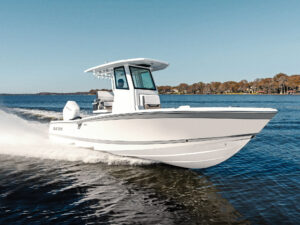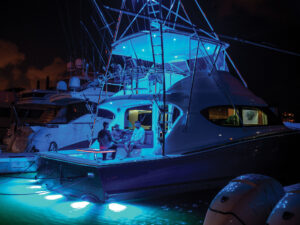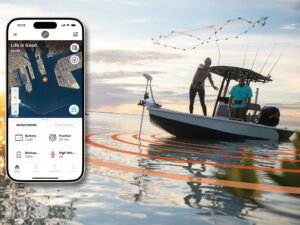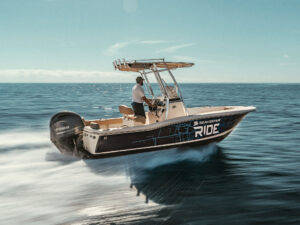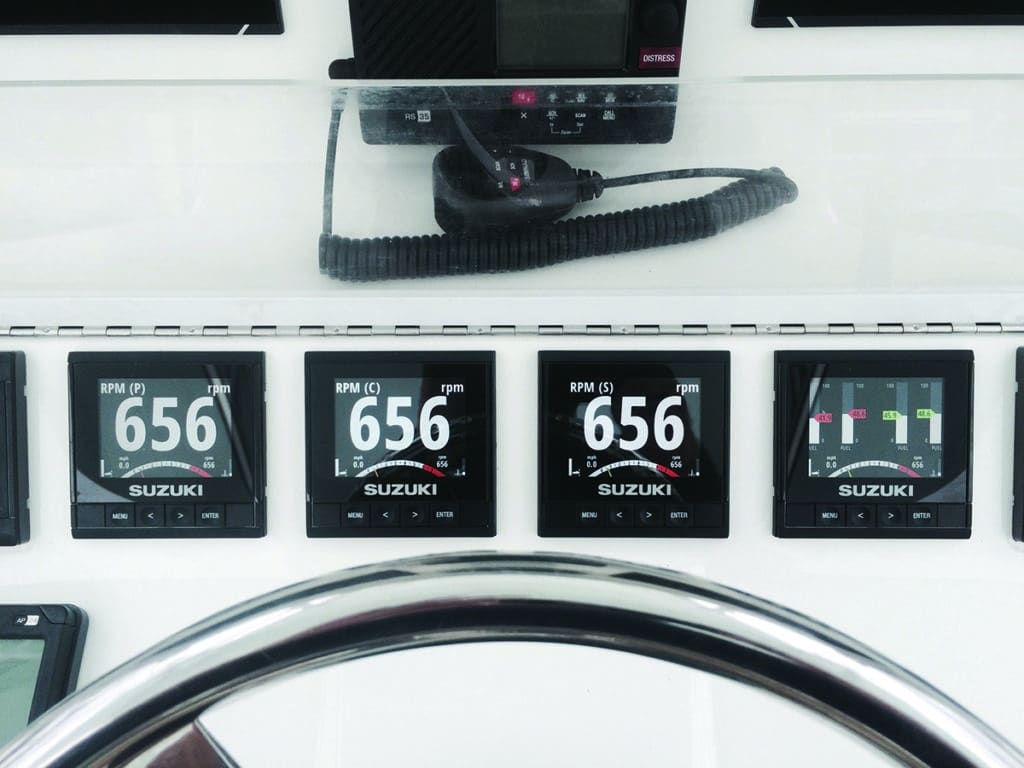
Readouts display a variety of data, but assign one per engine for best monitoring. The fourth gauge in this quad setup shows data for all engines at once. “The digital display system is an interface that talks directly to the engine-control module to provide real-time accurate data,” says David Greenwood, Suzuki Marine’s product planning manager. Suzuki calls theirs the Suzuki Modular Instrument System, but other outboard manufacturers have similar setups. All of these systems monitor and display outboard-engine functions.

All manufacturers provide multi-data display options for fuel-monitoring systems.
A lot of factors determine optimum fuel economy,” Greenwood explains. “Cruising speed, trim angle, hull drag and the throttle setting all come into play. The engine has sensors that monitor temperature and pressure, as well as a throttle-position sensor that monitors the throttle opening or angle to tell how much fuel to inject. By setting the gauge to display fuel economy and miles per gallon, you can dial everything in for the best performance.”
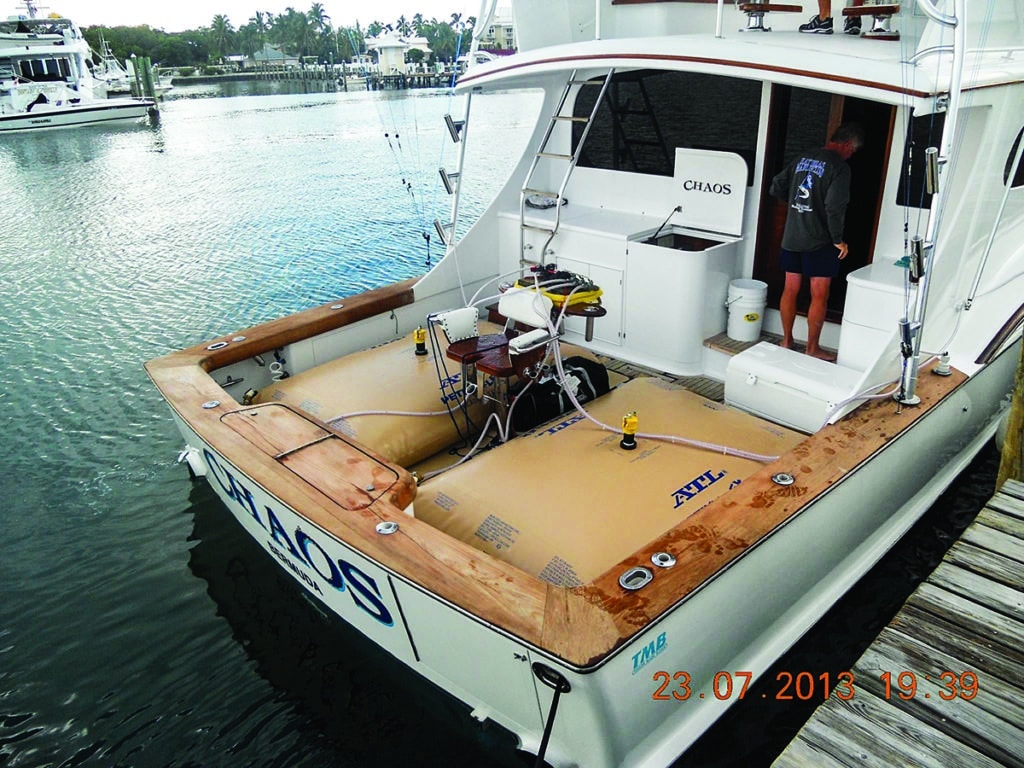
For extending range on long runs, spare fuel rides in collapsible bladders safely nestled inside the cockpit.
It’s a common practice for anglers running to the canyons from Mid-Atlantic ports, heading to oil and gas rigs throughout the Gulf of Mexico, or transiting from Southern California down to remote waters off the Baja peninsula. But to carry fuel safely with the least amount of hassles, you need an auxiliary fuel bladder. Aero Tec Laboratories (atlinc.com) is a popular manufacturer of two collapsible tank styles made from hardy rubberized fabric. Capacities range from 25 to 500 gallons, with prices starting around $500. Custom sizes are also available.

